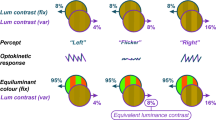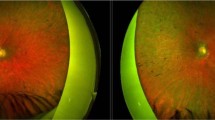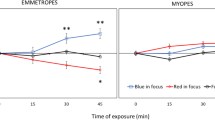Abstract
THE article by E. N. Willmer in NATURE of February 20 is interesting, but there is no evidence that the rods are percipient elements ; rather there is overwhelming evidence that they are nerve elements sensitizing the film round the cones with the visual purple. The displacement of the positive after-image proves conclusively that the primary stimulus in vision is liquid, the muscles of the eye having a double function, one to move the eye, and the other by pressing on the back of the eye arid shifting the photochemical film in the direction in which the eye is moved. The negative after-image remains in its primary position, but the positive after-image is seen farther on in the direction in which the eye is moved. This can easily be seen with a light, or even with an area of colour on a white ground. If, for example, a red square on a white ground be looked at for as short a time as possible and then the eyes be directed at a point immediately above the square, a green negative after-image will be seen at this point and higher up a distorted positive after-image or a series of red dots on a light red ground exactly similar to the cones of the retina viewed under a high-power microscope. There is no persistence of vision in ordinary circumstances when the eye is moved, but when the hand is moved in front of the eyes a dozen or more hands will be seen.
Similar content being viewed by others
Article PDF
Author information
Authors and Affiliations
Rights and permissions
About this article
Cite this article
EDRIDGE-GREEN, F. Physiology of Colour Vision. Nature 151, 422 (1943). https://doi.org/10.1038/151422a0
Issue date:
DOI: https://doi.org/10.1038/151422a0



